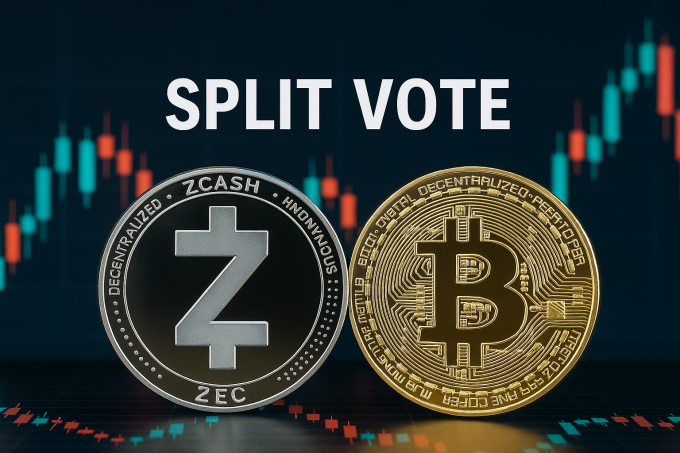3 Key Points:
-
BNY projects stablecoins and digital cash instruments could surge to $3.6 trillion in value by 2030, led by institutional adoption.
-
Regulatory clarity in regions like the EU, U.S., and Asia-Pacific is accelerating mainstream integration of tokenized assets.
-
BNY predicts blockchain will complement—not replace—traditional finance, unlocking faster settlements and improved collateral efficiency.
By SKN News
The world’s oldest custodian bank, BNY (Bank of New York Mellon), expects stablecoins, tokenized deposits, and digital money funds to collectively reach $3.6 trillion in circulation by 2030, as institutions increasingly embrace blockchain-based financial instruments.
In its latest Digital Assets 2030 Outlook Report, released Monday, BNY projected that stablecoins alone could grow to $1.5 trillion, with the remainder made up of tokenized cash equivalents such as money market funds (MMFs) and bank deposits represented on blockchain networks.
These digital cash instruments—referred to collectively as “tokenized cash”—are poised to transform institutional finance by streamlining settlements, optimizing collateral, and reducing counterparty risk, according to the report.
“We stand at a powerful inflection point that may fundamentally transform how global capital markets function,” said Carolyn Weinberg, BNY’s Chief Product and Innovation Officer. “The combination of traditional and digital has the potential to be a powerful unlock for our clients and the world.”
Institutional Adoption Driving Tokenized Finance
BNY’s research underscores a critical shift: the institutionalization of blockchain technology. Instead of viewing stablecoins as speculative tools, banks and asset managers are now positioning them as strategic financial infrastructure.
According to the report, tokenized assets—including U.S. Treasuries, corporate debt, and money market funds—could be used as instantaneous collateral in transactions that currently take days to clear.
For instance, a pension fund could one day post margin on a derivatives contract using a tokenized MMF, allowing for near-real-time collateral mobility and auditability.
Such innovations could cut operational friction, lower settlement risk, and enable new forms of liquidity management.
“Tokenized cash can serve as the connective tissue between traditional and digital markets,” BNY wrote, adding that it expects “significant demand from asset managers, corporates, and institutional investors looking to optimize cash usage.”
Regulation: The Catalyst for Institutional Scale
While blockchain technology has matured, regulatory progress remains the primary accelerant for institutional-scale adoption.
BNY pointed to the European Union’s Markets in Crypto-Assets (MiCA) legislation—set to be fully implemented by 2026—as a “critical foundation” for market growth. Meanwhile, ongoing policy developments in the United States and Asia-Pacific are creating “harmonized frameworks” that may soon enable cross-border tokenized settlements.
The report highlighted that regulatory clarity will reduce compliance barriers and allow traditional institutions to safely integrate stablecoin payment systems and tokenized asset custody solutions into their existing operations.
“Regulation is moving from restrictive to constructive,” the report noted. “Jurisdictions that define clear legal perimeters for tokenized assets will attract the lion’s share of institutional liquidity.”
BNY’s Vision: Integration, Not Disruption
Unlike earlier narratives that positioned blockchain as a replacement for traditional finance, BNY emphasized integration and interoperability as the real path forward.
Weinberg argued that hybrid financial systems—where digital tokens coexist with legacy payment and settlement infrastructure—will dominate the next decade.
“The future isn’t about dismantling what works,” she said. “It’s about extending the reach of traditional finance through digital innovation.”
BNY envisions a world where digital cash instruments operate on permissioned blockchains connected to central bank and commercial systems, facilitating instant global settlements while preserving regulatory oversight.
Strategic Implications for Global Finance
The projection of a $3.6 trillion market underscores how far tokenized finance has come since stablecoins first appeared less than a decade ago.
For context, that figure would make tokenized cash roughly equivalent to 10% of today’s global M2 money supply—a scale comparable to the entire U.S. commercial paper market.
Analysts at Galaxy Research and Citi Digital Assets have made similar predictions, estimating that $4–5 trillion in real-world assets could be tokenized by 2030, led by money markets, bonds, and cash equivalents.
BNY’s forecast positions stablecoins and tokenized deposits not as speculative crypto products, but as core enablers of next-generation finance, blending efficiency, compliance, and programmability.
Looking Ahead: Blockchain as Financial Infrastructure
As the boundaries between crypto and traditional finance continue to blur, BNY’s report reinforces a growing consensus: tokenization is not an experiment—it’s the next evolution of capital markets.
With its custody business already servicing over $45 trillion in assets, BNY’s pivot toward blockchain-integrated systems could accelerate institutional adoption and redefine how liquidity moves through the global economy.
“Digital cash and stablecoins are the bridge between today’s markets and tomorrow’s financial system,” BNY concluded. “The future of money is programmable, instant, and interoperable.”












https://shorturl.fm/k7wz7